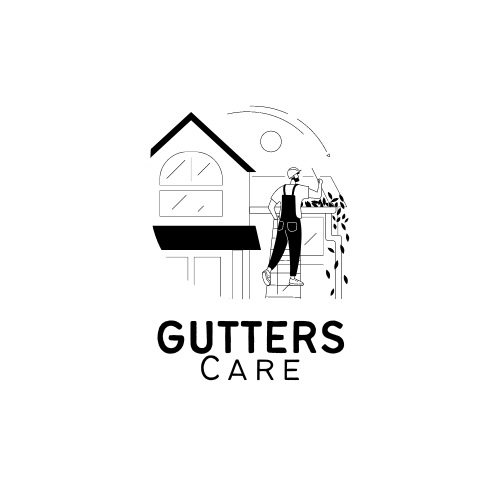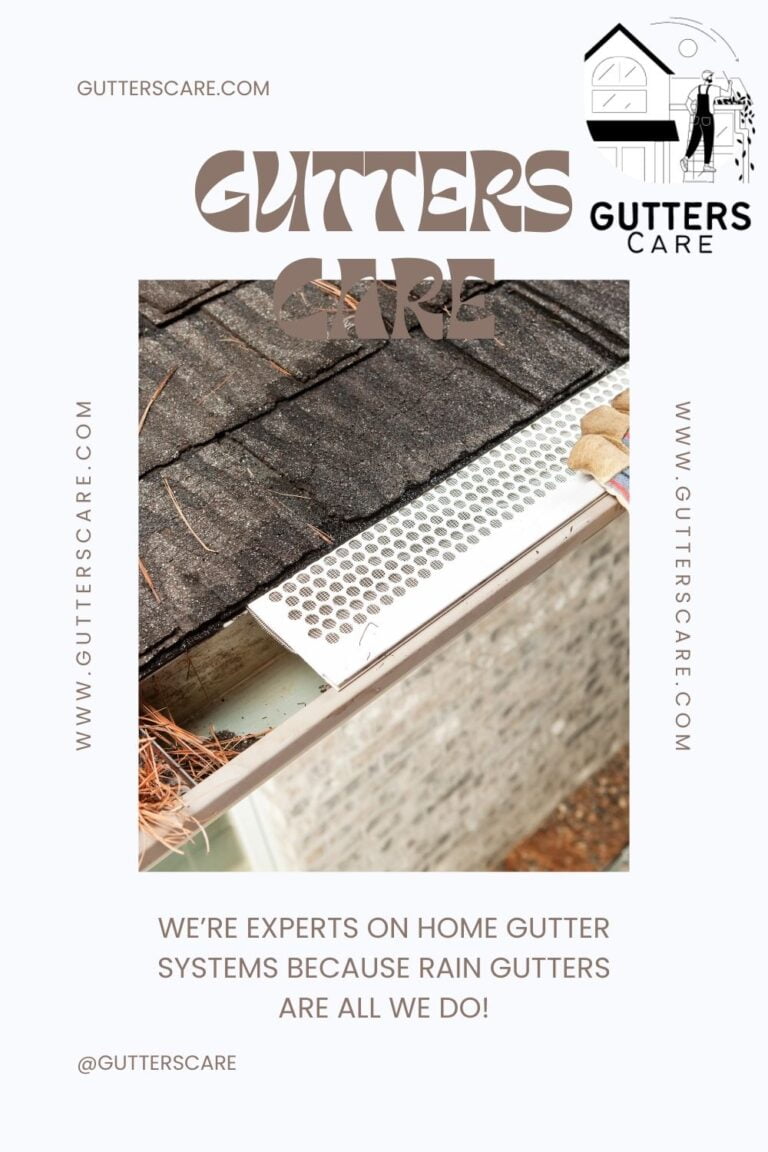Is guttering part of the roof?
Do Gutters Complement the Roofing Material?
Quick answer: Not in the strictest sense of the phrase. As we’ve already established, gutters aren’t installed at the same time as a roof unless the homeowner requests them, and some homes can even do just fine without them.
If you have any experience installing rain gutters, you know that the condition of your roof is crucial. The area and pitch of the roof will be used as guides by the professionals who install rain gutters.
People tend to think of gutters as a single structure because of how they fit beneath the roof, despite the fact that the two parts are typically constructed at distinct times.
Do you agree that gutters belong on the roof or disagree? If you don’t know the answer for sure, we can perform the research for you.
More Articles on Roof Gutters:
- Ultimate Guide to the Best Rated Leaf Guards for Gutters
- Ultimate Guide to Installing Leaf Gutter Guards: Say Goodbye to Clogged Gutters!
- Safe Haven Gutters vs. DIY: Which Is the Best Shield for Your Home?
- Ultimate Guide to Essential Gutter Cleaning: Tips, Tools, and Techniques
- Dangers of Stagnant Water in Gutters: Causes, Effects, and Solutions
Are gutters a part of the roof?
not in the strictest sense of the word. As we’ve already established, gutters aren’t installed at the same time as a roof unless the homeowner requests them, and some homes can even do just fine without them. But once they are in place, their effectiveness is so tied to the condition of the roof as a whole that they are often thought of as a part of the roof itself.
Even if gutters aren’t put on, the drainage system of a house is set up when the roof is built. When constructing a house, the drains will be placed in areas determined by the roof’s area and slope.
After a number of factors are taken into account, like the homeowner’s taste in looks and the average annual rainfall in the area, the process can begin.
Your roof’s integrity is protected against things like degradation, leaks, rotting, and pest infestation thanks to your gutters. Even if your gutter system is in great shape, you may have to take it apart and put it back together if your roof needs a lot of work.
Most of the time, you won’t have to fix the fascia or any other parts of the roof if you replace the gutters.
Without gutters, water would pool around the bases of many homes built in the last few decades, causing structural damage until the owners decided to have gutters put in.
This happens a lot in many parts of the U.S., so much so that gutters are almost a necessity in places where the rainy season is very unpredictable.
Even though foundation damage often happens over a long period of time, the fact that a house can go for years without rain gutters does not mean that it doesn’t need them.
What Are the Different Parts of a Roof?
While rain gutters are very important, it’s important to examine the entire roofing system, not just the gutters, before installing them.
After all, rain gutters aren’t needed for a roof to be finished during construction, and removing them doesn’t mean you have to replace the whole roof unless there’s a lot of damage to the structure. In light of this, let’s look at how a roof works and what rain gutters are for.
1. Decking
Decking It can be built using different materials and methods, like planks, plywood, sheets, etc., depending on the needs of the homeowner and the weather in the area.
2. Shingles
To the untrained eye, the shingles on your roof are what stand out the most. They protect the roof and are secured to the decking by means of overlap. Typically composed of fiberglass and asphalt, their installation greatly improves a home’s curb appeal.
3. Ridge
The ridge is the uppermost horizontal line that divides the roof’s sloping sides.
4. Attic
The attic is the space right under the roof. It usually goes all the way up to the top of the building. Without gutters, this is one of the first areas of a property to show the effects of water damage.
5. Fascia
If you want to install rain gutters, you need to know about the fascia, which is another part of a roof that is easy to see. The fascia is a horizontal board that runs the length of a roof and is attached at its farthest border.
A fascia board is a horizontal board that runs along the edge of a roof and is supported by the rafters above. Fascia boards can be made from wood, aluminum, vinyl, and fiber cement, among other things.
Most houses in the suburbs only require gutters on two sides; thus, a massive seamless rain gutter system that goes around the entire building is unnecessary.
This is because the roofs of these homes usually slope in opposite directions, sending rainwater to the sides of the building where the roof doesn’t cover. However, some roofs have valleys, which are V-shaped cuts in one of the main sides of the roof that create two new slopes.
Since the general norm is that there is a guttering system controlling the flow of rainwater under each slope, these angular shifts should be taken into account while fabricating the gutters.
Obviously, there are huge variations from one house to the next. Most apartment complexes and stores have horizontally oriented, flat roofs.
Even though this doesn’t make it easier to put up rain gutters since commercial buildings are usually bigger than homes, it does get rid of the need for many of the exact measurements that are usually needed when working on roofs in the suburbs.
Read more about Home Gutters and Roof Guttering Systems:
- Ultimate Guide to the Best Rated Leaf Guards for Gutters
- Ultimate Guide to Installing Leaf Gutter Guards: Say Goodbye to Clogged Gutters!
- Safe Haven Gutters vs. DIY: Which Is the Best Shield for Your Home?
- Ultimate Guide to Essential Gutter Cleaning: Tips, Tools, and Techniques
- Dangers of Stagnant Water in Gutters: Causes, Effects, and Solutions
- How Grey Gutters on a White House Transform Your Home’s Exterior
- Ultimate Guide to Norandex Gutter Guards: The Solution to Your Home’s Gutter Problems
- LeafFilter Consumer Reports: Ultimate Guide to Gutter Protection
- Revolutionizing Your Home: Gutter Solutions and Home Improvements
- Definitive Guide to Seamless Gutter Installation: Tips, Costs, and Benefits
- Ultimate Guide to Gutter Services: Installation, Maintenance, and Repair
- Everything You Need to Know About Gutter Installation Services
- White House Black Gutters: Ultimate Guide to Maintenance and Style
- Everything You Need to Know About Gutter Contractors: Tips for Hiring the Best in Your Area
- Ultimate Guide to Choosing the Best Gutter Leaf Protection System
- Understanding the Cost for Gutters on a House: A Comprehensive Guide
- Leaves in the Gutter: Causes, Consequences, and Effective Solutions
- Choosing the Best Gutters for Your 4000 Sq. Ft. House: A Comprehensive Guide
- Ultimate Guide to Micro Mesh Gutter Guard Installation
- Guide to Understanding the Cost of New Gutters and Downpipes
- Enhance Your Home’s Aesthetics with Black Roof and Black Gutters on a Brick House
- Enhancing Your Homes Curb Appeal: Black Gutters on a Gray House
- Ultimate Guide to Residential Gutter Cleaning: Tips, Techniques, and Benefits
- The Gutter Man: Your Ultimate Guide to Gutter Maintenance and Repair
- Gutter Covers That Will Change Your Life (For the Better)
- Leaf Filters: Ultimate Guide to Buying and Installing Gutter Guards
- Downspout Extensions: Ultimate Guide to Protecting Your Home from Water Damage
- Down Spouts: How to Prevent Clogs, Leaks, and Rust
- LeafGuard Gutters: The Ultimate Gutter Protection System
- Home Depot Gutters: Ultimate Guide to Choosing, Installing & Maintaining Your Gutter System





